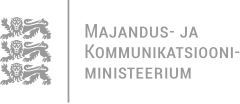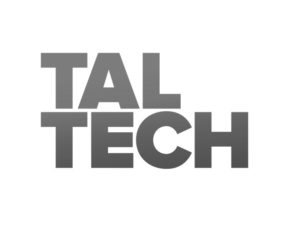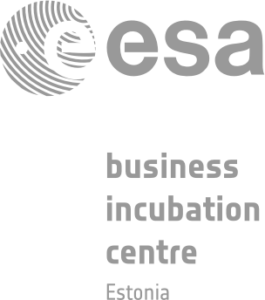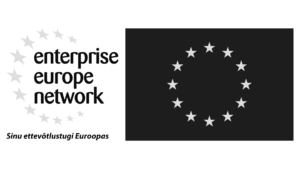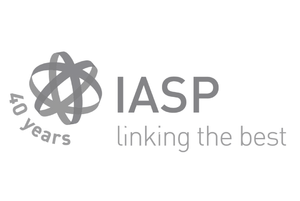Jaanika Merilo: “You try, you fail, you improve, you pivot”
On 22 September, Tallinn will host Defence Innovation Day, bringing together leaders from defence, technology, and investment across the NATO alliance and beyond. For panel moderator Jaanika Merilo, this is more than just a discussion, it is a chance to bring lessons from Ukraine’s battlefield directly into conversations shaping Europe’s security future.
If this event were taking place in Kyiv, Merilo says the focus would be very different. Rather than general discussions on deregulation, the agenda could feature sessions on “how to mass-produce now that we have many MVPs (minimum viable products),” “how to award and purchase missions and results, not hardware,” “combat AI and autonomy” or “battlefield data fusion.” In other words: less about frameworks and more about achieving results on the battlefield.
This sharper focus comes from necessity. Europe remains highly regulated, which makes rapid innovation difficult when urgent needs collide with layers of directives. In Ukraine, a drone development cycle can be as short as 24 hours. Development teams are located close to the front line, receiving real-time data from drones. Adjustments are made on the spot, and the upgraded drone is back in operation within days. “No one asks whether it complies with the AI Act or other peacetime regulations, the only question is whether it will save lives.”
The same urgency has also transformed how success is measured and how innovation is procured. In Ukraine, it is not about counting drones delivered; success might be measured by missions accomplished or targets hit and destroyed. Instead of lump-sum financing, performance-based bonuses can be tied directly to battlefield results. This creates immediate incentives, but in many Western systems such an approach is still seen as going too far.
Innovation should play a much bigger role in defence education
Drawing on her Master’s studies in Defence, Espionage and Surveillance at King’s College London, Merilo argues that innovation should play a much bigger role in defence education. The war in Ukraine has shown the value of linking academia, the military, and innovative companies not only through research, but also through joint projects, rapid prototyping, and real-world testing. She highlights the need for regulatory sandboxes and testing environments to prepare defence leaders to work seamlessly with start-ups, tech firms, and cross-disciplinary teams.
This emphasis on agility is already visible in Estonia. From autumn 2025, she will teach in the new Master’s programme in Open-Source Intelligence (OSINT) at the Estonian Academy of Security Sciences, a forward-looking addition designed to keep curricula relevant and innovation-driven.
When helping start-ups pivot from civilian to defence applications without bureaucratic roadblocks, Merilo identifies four priorities:
- First, adopt procurement models that prioritise innovation over stockpiling, buying capabilities as needed rather than hardware that may become obsolete in storage.
- Second, expand advanced testbeds and polygons in Estonia to eliminate slow, costly trips to Ukraine for critical testing.
- Third, maintain close cooperation with the Estonian Defence Forces and fully leverage Ukraine as a testing ground.
- Fourth, develop regulatory sandboxes, a step already being pursued by the Ministry of Defence and Ministry of Economic Affairs.
In July 2025, Ukraine’s Ministry of Defence launched K4 Startup Studio, an accelerator focused on building and testing highly impactful AI start-ups and military technology. Companies are offered grants of up to $250,000 in combination with rapid battlefield testing and a direct path to procurement. In Ukraine, this initiative is backed by Germany’s Defence Ministry. Merilo believes such a model would be highly beneficial to Estonia.
Estonia, she notes, already has many of the necessary ingredients: NATO DIANA, CR14’s cyber expertise, a strong UAV (unmanned aerial vehicle) sector, a fast-moving start-up culture, and a legislature ready to create sandboxes. A national studio could start with state funding matched by private capital and EU/NATO programmes, with clear demand set by the Ministry of Defence and the Defence League. MVPs could be tested both in Estonian sandboxes and on the battlefield in Ukraine, with performance-based follow-on funding.
This readiness to test and iterate connects to her view on the term “dual-use.” While a drone could serve both defence and civilian purposes, the required features, engineering, and marketing are entirely different. Larger firms may manage both, but for start-ups, splitting focus can weaken the product. Some civilian solutions can be adapted for defence, but this requires state funding to support piloting, failure, and MVP creation. As she says: “try fast, fail fast.” In Ukraine, failure is often encouraged as part of the iterative process needed to stay ahead on a constantly shifting battlefield.
Speed though does not equal instant scaling. An MVP can be developed quickly, but mass production needs production lines, supply chains, and quality assurance. Partnering with Ukrainian companies adds value. Estonian firms can handle production, quality control, European market access, and engineering, while Ukrainian partners focus on frontline development and feedback.
Even with a strong product, sales are not guaranteed. Ukraine often prioritises its own defence firms and may already have similar solutions. Government procurement is slower than B2B (business-to-business) or B2S (business-to-state), and political sensitivities narrow the pool of suitable investors. Defence needs backers ready for unpredictable, politically charged markets.
Still, the climate is shifting as more funds are lifting restrictions and exploring defence tech. For now, investor demand exceeds company supply.
This makes it an opportune time for Estonia to strengthen its appeal to foreign defence and dual-use entrepreneurs. “It is sad that this advantage is due to war, but Ukraine welcomes innovative companies to test there, and Estonia can be a strong bridge.”
Estonia’s first defence unicorns
Looking ahead, Merilo names two Estonian companies tackling critical challenges with the potential of becoming our first defence unicorns: Frankenburg Technologies, which is developing low-cost interceptors to counter cheap but effective Shahed* drones, and KrattWorks, which is producing EW (electronic warfare)-resilient reconnaissance and strike drones capable of swarming.
Her message for Defence Innovation Day is clear: Estonia has much to learn from Ukraine’s speed, adaptability, and focus on results. By shortening feedback loops, investing in real-world testing, and aligning procurement with performance, NATO countries can turn innovative ideas into battlefield-ready capabilities far more quickly.
Join us in Tallinn on 22 September ofor a Defence Innovation Day to hear Jaanika Merilo and other leading voices in defence innovation.
Defence Innovation Day is brought to you by Tehnopol and the Ministry of Economic Affairs and Communications through the NATO DIANA Estonian Accelerator. One session is co-curated by Sparkup Tartu Science Park.
* Shahed drones are Iran‑designed loitering munitions, kamikaze-style drones used by Russia in Ukraine.
** Photo: sTARTUp Day
From the Frontlines to Tallinn: A Ukrainian Founder’s Perspective on Defence Innovation
When Russia’s full-scale invasion began, Misha Rudominski’s reaction was immediate: “I need to do something.” That urgency has stayed. At first it meant delivering tools as quickly as possible, even if imperfect, to meet critical needs. As his work scaled internationally, the same drive has translated into raising standards, because “the more we grow, the more lives we can help protect.”
That mission has taken shape in HIMERA, which develops secure, self-healing communication systems designed to maintain performance under intense electronic warfare. Built on a modular architecture, the technology serves both military units and civilian first responders in disasters, blackouts, and border crises, with features such as mesh networking added in direct response to battlefield feedback.
This responsiveness is central to how the company operates. Instead of quarterly sprints and staged testing cycles common in civilian tech, Rudominski’s team reacts directly to frontline reports, sometimes arriving mid-mission. One example came from a signal commander who had to keep a soldier on a hill to connect two strongholds via separate radios; within two weeks, that feedback led to a firmware update enabling mesh connectivity. In three years, more than 80 firmware and 20 hardware changes have followed the same pattern, each version built because someone needed it immediately.
Collaboration and lessons to share
Working under such conditions has shaped Rudominski’s view on what it takes to build effective dual-use technology. He distils it into three lessons for other founders: build fast without compromising essentials, speak directly with end users, and stay anchored to the mission to avoid burnout. It has also influenced how he approaches collaboration, favouring partners who listen to actual needs and adapt, and steering clear of those focused solely on pushing their own solutions or chasing publicity.
Procurement is another area where Ukraine’s experience offers valuable lessons to others. Giving operational units greater say in defining requirements has led to faster and more relevant results than top-down models. Rudominski believes other countries could benefit from aligning innovation more closely with real-world demands.
When he joins the panel How Ukraine is Redefining Defence Tech at Defence Innovation Day in Tallinn, Rudominski is looking to exchange perspectives with Baltic peers on dual-use development, cross-border collaboration, and working within NATO structures. His message to the audience will be clear: “Now Europe and the democratic world are as much dependent on Ukraine, in its future security, as Ukraine is dependent on you. Both sides should act accordingly.”
That perspective extends to recent institutional changes in Ukraine. Rudominski welcomes the creation of the Unmanned Systems Forces (USF), calling it a turning point in the war that, combined with human determination, has enabled effective resistance against a larger adversary. The USF is a uniquely structured military branch, established in June 2024, that coordinates Ukraine’s use of unmanned aerial, ground, and naval systems in combat — the first of its kind globally.
Operating in a conflict where civilians are targeted also shapes his approach to International Humanitarian Law. He sees the principles of distinction and proportionality as daily ethical boundaries, guiding decisions from design to deployment. His systems are intended for uniformed defence forces and avoid features that could blur the line between civilian and military use, with reliable communications helping to prevent unintended harm by improving coordination.
More broadly, he aligns with the spirit of the Martens Clause, which upholds humanitarian principles and the dictates of public conscience even where no specific laws apply, and designs systems that are hard to abuse, easy to audit, and held to standards he wishes others would follow.
If you want to hear Misha Rudominski’s panel alongside other thought-provoking keynotes and take part in valuable networking opportunities, you can find more information and register for Defence Innovation Day here.
The event is organised by Tehnopol and the Ministry of Economic Affairs and Communications through the NATO DIANA Estonian Accelerator, with one session co-curated by Sparkup Tartu Science Park.
Defence primes need speed, startups need scale
As modern warfare evolves, so does the way defence technology is developed and deployed. Quantum Systems, one of the few European defence unicorns, brings battlefield-tested innovation to the front lines. Ahead of his keynote at Defence Innovation Day in Tallinn, Quantum’s CRO, Martin Karkour shares insights on AI-powered drones, startup growth, and Estonia’s role in NATO innovation.
In fast-moving conflict zones like Ukraine and the Red Sea, autonomous and AI-powered unmanned aerial systems (UAS) are no longer experimental — they are operationally essential. These systems must be able to process sensor input, adjust flight paths, and react to threats in real time.
While human oversight remains crucial, AI reduces the cognitive load on operators. In Ukraine, Quantum’s VECTOR drones have improved endurance and provided situational awareness, allowing faster and more informed decisions during missions.
Looking ahead, Quantum’s CRO Martin Karkour emphasises that AI integration is about more than navigation or image recognition. It enables coordination between crewed and unmanned platforms (known as MUM-T), and supports swarm capabilities, both of which offer advantages in speed, scale, and adaptability.
Quantum Systems recently signed two strategic agreements, one with RENK Gears Private Ltd in April and another with Airbus Defence in June. These collaborations highlight a shift in defence innovation from isolated development to interconnected ecosystems. Startups bring agility and technical focus; larger companies bring production scale and established infrastructure.
“Primes need speed, startups need scale,” said Karkour. He noted that the Airbus partnership formalises an existing working relationship focused on aerial reconnaissance systems, while RENK’s experience in land-based systems strengthens Quantum’s push into autonomy. Estonia, he added, is one of the few countries where such multi-actor collaboration already works in practice.
When asked what defence or dual-use startups should prioritise, Karkour pointed to three things: user feedback, traction from both customers and investors, and staying aligned with the mission. While accelerator programmes have their place, real-world operational testing matters more. “Only real soldiers in real war reveal if your tech can truly survive combat,” he said.
He also encouraged startups to partner with governments that move quickly. Estonia, due to its geopolitical position and digital infrastructure, offers a unique advantage in rapid testing and deployment — especially compared to larger, slower bureaucracies.
Germany’s defence budget is set to grow significantly in the coming years, and while Karkour sees this as a positive development, he warns that budget alone is not enough. “It’s about resilience, industrial capacity, and procurement reform.” What encourages him most is the emergence of a new generation within the Bundeswehr (German Defence Forces) that has worked alongside Estonian and Ukrainian counterparts and understands the urgency of practical innovation.
Quantum’s operations span Germany, Australia, the United States, Ukraine and Romania. Karkour explained that each market offers a different lesson: Ukraine teaches agility, the US focuses on scalability, and Australia prioritises sovereignty and long-term planning.
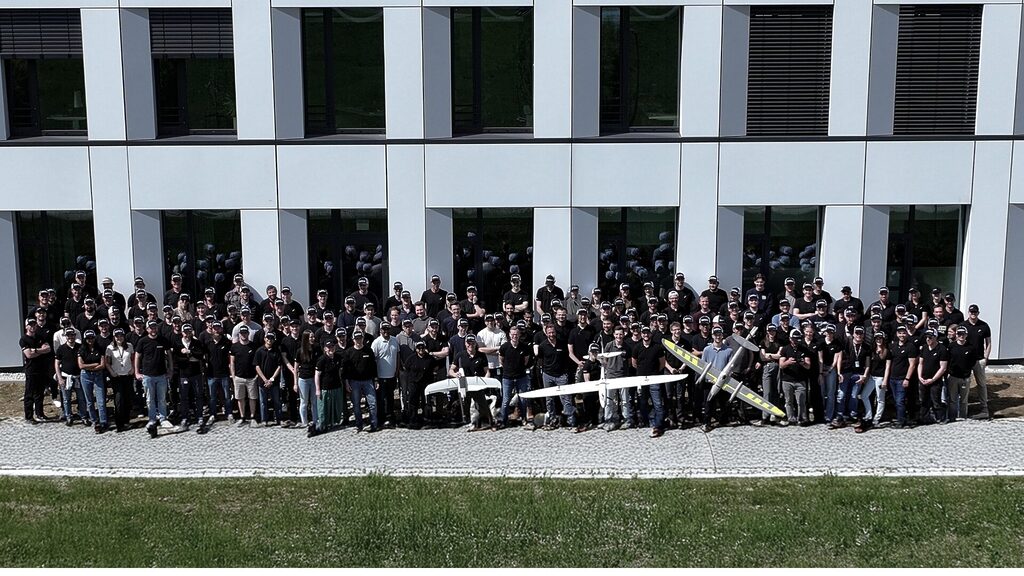
In that context, Estonia stands out for its digital backbone, cybersecurity expertise, and speed of implementation. Quantum Systems already sources part of its supply chain from Estonia and sees potential to expand furthe
On the question of balancing European strategic autonomy with NATO interoperability, Karkour sees no contradiction. “Systems must work with NATO from day one but also be capable of operating independently if needed.” Quantum’s MOSAIC UXS software is designed with this in mind — open architecture, NATO-compliant, and developed in Europe.
The increased use of commercial-off-the-shelf (COTS) technologies on the battlefield has also raised concerns about quality under pressure. Karkour was direct: “You draw the line at lives.” A prototype may be enough for a demonstration, but trust is only earned when a system survives harsh operational conditions, including jamming, bad weather, and direct threats.
With more non-dilutive funding options now available, such as EDF, EDIRPA, and NATO DIANA, defence startups face the challenge of balancing fast iteration with long public procurement cycles. Karkour advises a three-track strategy: early customer feedback, long-term development through grants, and a commercialisation plan that keeps investors engaged. “Don’t let public funding distort your product–market fit,” he said.
Finally, he addressed the rise of non-traditional investors in defence. In his view, being “defence-ready” means understanding longer timelines, ethical complexity, and a commitment to democratic values. “We’re lucky to have investors at Quantum Systems who understand that defence is a mission, not a hype cycle.”
Looking ahead to Defence Innovation Day on 22 September, Karkour said: “Estonia represents everything that’s possible when a country commits to innovation, security, and sovereignty at the same time.” For him, Estonia’s speed, digital integration, and strong collaboration with allies represent the future NATO needs.
Do you want to hear Martin Karkour’s keynote, as well as other interesting panels and networking opportunities? You can find more info and register for Defence Innovation Day .
Defence Innovation Day is brought to you by Tehnopol and the Ministry of Economic Affairs and Communications through the NATO DIANA Estonian Accelerator. One session is co-curated by Sparkup Tartu Science Park.
How can startups contribute to national defence?
This time, Kuku Radio’s “Ettevõtlusminutid”, a radio show dedicated on entrepreneurship, focused on why it is important for startups and technology companies to contribute to national defence and how the NATO DIANA accelerator supports strengthening defence capabilities.
The discussion also covered Estonian companies that have successfully completed the NATO DIANA acceleration program and have already secured significant investments.
In addition, the conversation touched on the upcoming Defence Innovation Day, which will take place on September 22 at Kultuurikatel. The event is open to all interested participants — more information and registration available here.
The guest on the show was Sabina Sägi, Community and Communications Manager at NATO DIANA’s Estonian accelerator. The show was hosted by Ingela Virkus.
Many thanks to the Estonian Chamber of Commerce and Industry for the invitation!
Listen to the episode (in Estonian):
Estonian startup Wayren’s technology was successfully tested during HIMARS live-fire exercise
At the first live-fire exercise of HIMARS rocket launchers conducted by Estonian Defence Forces on Saaremaa, the critical communication technology developed by Estonian defence industry startup Wayren was successfully tested. This technology ensures vital communication between units even when traditional communication systems are no longer operational. Wayren participated in the NATO DIANA Estonian Accelerator.
Reservists participating during the exercise of the division’s artillery battalion’s rocket artillery battery used Wayren’s Singularity software, which enabled them to share location information and functioned as an additional communication mechanism for organizing logistics. Thanks to the light and scalable nature of Wayren’s technology, its use was expanded during the exercise to also provide location sharing for intelligence and weapons-level data transmission.
Wayren’s CEO and co-founder Henry Härm stated that the live-fire exercise simulated a highly realistic situation where, due to complex terrain and dynamic condition, conventional communication solutions fail – “The results showcased that our technology is reliable and simple to use. The Singularity software kept the units operational even under extremely difficult conditions,” said Härm.
Wayren’s CSO and co-founder Tarmo Aia noted that the exercise demonstrated the necessity of their solution for defence forces, for whom reliable communication is vital for success in their primary tasks. “We are proud that our efforts in developing lightweight hybrid mesh network technologies have borne fruit. This gives us confidence to continue investing in this field,” Aia added.
The exercise held on the Undva Peninsula in Saaremaa took place from the 4th to the 12th of July and aimed to improve the unit’s combat readiness, develop interoperability, and reinforce soldiers’ knowledge and skills in using weapons systems. The M142 HIMARS artillery rocket launchers are considered one of the most modern long-range indirect fire systems in the world. Their introduction into the Estonian Defence Forces marks a significant increase in national defence firepower in both strength and range.
Wayren is a startup founded five years ago by three former cyber defence personnel members — Henry Härm, Oliver Tiit, and Tarmo Aia. This spring, Wayren signed a strategic investment agreement worth 7.9 million euros.
The Singularity communication platform developed by Wayren enables reliable communication on the battlefield between soldiers, command staff, and various platforms under challenging conditions. The company’s patent pending system creates a robust hybrid mesh network connecting units, vehicles, or command posts, synchronizing data in parallel through various civilian and military communication technologies. Currently, the system has been delivered as a pilot project to the Estonian Defence League and is actively tested by the Estonian Defence Forces and in Ukraine.
Wayren recently successfully completed the NATO Diana accelerator, being one of only two Estonian companies selected for this year’s group.
Startup Story: Scaleout Systems X NATO DIANA Estonian Accelerator
Scaleout Systems is redefining how machine learning (ML) is deployed in privacy-sensitive environments. Traditional centralised AI development requires organisations to consolidate sensitive data in a single location. This process raises significant privacy, security, and regulatory concerns. Scaleout’s software platform solves this by orchestrating machine learning across edge, cloud, and secure environments, bringing computation as close to the data as possible. At the heart of the platform is federated learning, a privacy-first method that enables collaborative model training across distributed devices without transferring raw data.
How did you come up with the idea to create a startup?
We had started working on federated learning in our distributed scientific computing group at Uppsala University in Sweden. We quickly realised that this technology was going to become a foundation layer in the ML stack for applications that require strict control over data ownership and privacy, and we wanted a focused approach to making it operational.
What has been your biggest win so far?
We were fortunate to engage early with innovators at large enterprises, such as Scania CV.
What sets your startup apart from competitors?
Scaleout Systems helps companies use artificial intelligence (AI) without putting sensitive data at risk. Usually, to train AI, all the data must be sent to one central place but that can create privacy and security problems. Scaleout’s technology works differently: it allows the AI to learn from the data where it already is, like on local devices or in secure systems, so the data doesn’t have to be moved. The federated learning approach allows different organisations to work together on AI projects while keeping their data private and safe.
From the beginning, we have had a clear vision for how to bring federated AI to production. We are deeply rooted in ML research, but have always stayed focused on evolving the roadmap together with early adopters at mission-critical organisations and enterprises.
Why did you choose the NATO DIANA accelerator?
We had realised what impact edge AI* and federated learning could have for defence applications. Applying to DIANA was a natural next step to learn and to evolve our dual-use strategy.
Where do you see Scaleout in 5 years?
In 5 years, Scaleout Edge will be the go-to platform for mission-critical AI in the edge-to-cloud continuum**. We have accelerated progress towards next-level autonomous systems and helped safeguard and scale AI for NATO and allies.
Which books or podcasts in your field do you follow, and would you recommend them to other aspiring entrepreneurs?
Right now, I am reading ”Cognitive Electronic Warfare” by Karen Haigh and Julia Andrusenko. For startup life, I like listening to the Y Combinator podcast – always entertaining and informative.
*Edge AI refers to running artificial intelligence directly on local devices, like sensors, drones, or other hardware – rather than relying on a central server or cloud. This makes it faster, more private, and often more reliable, which is especially important in critical situations like defence.
**The edge-to-cloud continuum refers to the seamless integration of computing across a range of environments – from edge devices (like sensors and drones) to central cloud systems. It means AI can run smoothly wherever it’s needed, whether close to the data source or in a powerful data centre, allowing for faster, more flexible, and more secure decision-making.
The Estonian accelerator is implemented by Tehnopol Startup Incubator together with Sparkup Tartu Science Park.
Four Estonian space startups receive €240,000 in funding
The Estonian Business Incubator of the European Space Agency (ESA BIC Estonia) has selected four new space-tech startups in its latest call: Babayte, Spiral Hydrogen, MS Forest, and Energy Risk Service. Each company will receive a development grant of €60,000 — half of the funding comes from the European Space Agency and the other half from the cities of Tartu and Tallinn, depending on the startup’s location.
A total of 11 strong candidates pitched their ideas to the ESA BIC Estonia consortium. Although the initial plan was to select three companies, the high quality of the applications led to the selection of four. One spot remains open for the upcoming autumn round.
The selected startups are:
- Babayte (Tartu) is developing BabAI Orbital — an onboard AI module for small satellites that helps avoid collisions.
- Spiral Hydrogen (Tartu) is creating a next-generation hydrogen generator with over 90% energy efficiency.
- MS Forest (Tallinn) is building a dynamic forestry data registry that reduces the time and cost of forest inventory.
- Energy Risk Service (Tallinn) is developing a satellite data-based forecasting system for the renewable energy sector.
Madis Võõras, Head of the Estonian Space and CERN Office, affirmed the high quality of the candidates: “The number, quality, and substance of the applications submitted for evaluation impressed the panel — but also made the selection process challenging. That’s why we ultimately decided to accept four candidates instead of the initially planned three.”
Kristiina Libe, Project Manager for Deep Tech at Tehnopol (pictured), emphasized that space technology is no longer just about solving problems in space: “There’s a growing recognition of how satellite data and other space-based technologies can be applied for the benefit of our planet. We welcome applications from companies with the ambition, dedication, and expertise to take space technology to the next level — both on Earth and in orbit.” She added that the accelerator’s mission is fully aligned with Tehnopol’s goal of supporting world-changing tech companies and innovation.
Sven Lilla, Head of the Space Sector at Tartu Science Park and Manager of ESA BIC Estonia, also highlighted the increasing relevance of space technologies in everyday life and the willingness of companies to take bigger risks in order to gain a competitive edge: “This round saw a notably high number of foreign founders among the applicants, demonstrating the growing attractiveness of Estonia’s ecosystem,” added Lilla.
Paul Liias, Head of Space at the Ministry of Economic Affairs and Communications, noted that the state actively supports deep tech development and entrepreneurship through ESA BIC: “Through ESA BIC investments, the government accelerates the growth of the capital-intensive deep tech sector, helping Estonian startups take their first steps and gain experience working with ESA.” He added that over the past eight years, the ESA BIC model has proven successful in preparing companies for investment and market entry.
The ESA BIC Estonia incubator is led by Tartu Science Park in collaboration with the Tehnopol Science and Business Park. The program is co-financed by the European Space Agency and the cities of Tartu or Tallinn, each contributing €30,000 per company.
To date, 36 companies have joined the Estonian incubator — half based in Tartu and half in Tallinn. Tartu has invested €355,000 into the program, with incubated companies generating over €6 million in labor taxes and nearly €10 million in revenue. Tallinn has contributed €345,000, with its companies contributing nearly €5 million in labor taxes and generating over €12 million in revenue.
More information: www.esabic.ee
Startup Story: Factiverse X NATO DIANA Estonian Accelerator
Factiverse extracts crucial and reliable real-time insights from news, live broadcasts, YouTube, TikTok, and Telegram. It was founded on this mission in 2021 by Dr Vinay Setty, and award-winning journalist Maria Amelie. Factiverse’ vision is to create a world where every organisation can confidently assess the reliability of digital information, empowering knowledge and democracy through trustworthy insights amidst the overwhelming noise of inaccuracy and the efforts of bad actors.
How was the startup idea born?
The idea for Factiverse started in 2016 when Vinay Setty decided to do academic research on the possibility of using machine learning and artificial intelligence to fact-check statements made on social media and in the news. Once the solution had been thoroughly tested and peer-reviewed, Vinay joined forces with journalist Maria Amelie as co-founders to bring this solution to the media sector to tackle the growing problem of misinformation and disinformation online.
What has been the biggest challenge so far? What about the biggest obstacle & largest win?
The biggest challenge has been the constant comparison to large language models like GPT, which are shown to produce less accurate results when compared to Factiverse.
The largest obstacle has been educating the market on the difference between general AI tools and our precision-focused technology.
Our biggest win to date was securing a contract with a government sector organisation to support their disinformation detection efforts.
What differentiates Factiverse from the competition?
Factiverse stands out through its foundation in years of academic research, with peer-reviewed capabilities developed alongside strategic partners. Using our patented technology and the world’s largest fact-checking database gives us unmatched technical depth. Combined with our unique position and global network of partners in media and fact-checking, we offer a level of credibility and scale that sets us apart in the market.
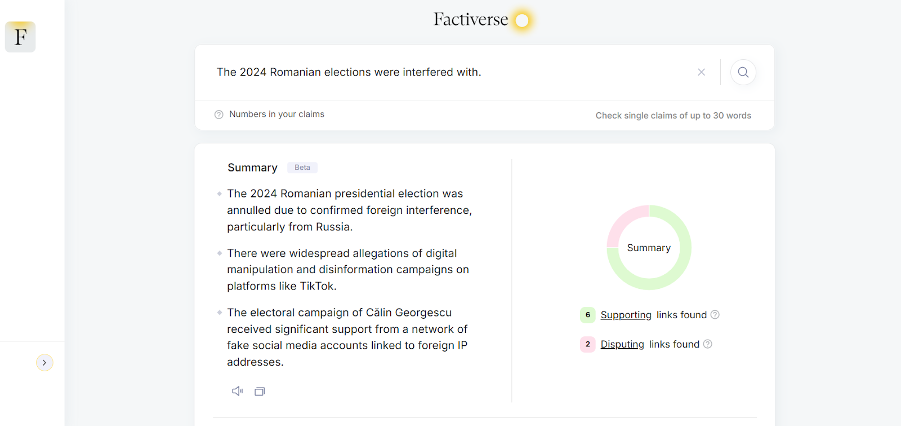
Why did you apply to the NATO DIANA accelerator?
Factiverse wanted to join NATO DIANA because we believe that our technology and product could be applied to the government and defence sector to help them detect harmful narratives. By being part of NATO DIANA, we could have opportunities to have direct access to those stakeholders and ensure that we are developing our solutions that meet the security challenges that they’re facing now. The understanding of this industry that NATO DIANA gives allows Factiverse to scale exponentially in this sector.
Where do you see Factiverse in 12 months’ time? How about in 5 years?
Factiverse has massive potential for growth over the next 12 months. With customers in both media and government, we are running more live fact-checking sessions with media broadcasters, launching our online fact-checking community, and implementing a series of product updates.
Given our current trajectory, in the next 5 years, we would like to be THE go-to company to give accurate and credible insights to organisations both in the private and public sectors.
Who will be the next unicorn in Estonia or in your home country?
In Norway Curipod or Databutton. In Estonia Wayren (*also part of batch #2 of the NATO DIANA Estonian accelerator).
Which books and podcasts in your field would you recommend to other startup founders?
Books: Factfulness by Hans Rosling & Actionable gamification by Yu-Kai Chou
Podcasts: The Weekly Show with Jon Stewart & Business Wars with David Brown
On the photo (from the left): Vinay Setty, Maria Amelie, Gaute Kokkvoll
The Estonian accelerator is implemented by Tehnopol Startup Incubator together with Sparkup Tartu Science Park.
Bringing bold ideas to the frontline: EUDIS Hackathon spring edition winners announced
The second edition of the EU Defence Innovation Scheme’s (EUDIS) Defence Hackathon “Rapid Defence Solutions for the Ukrainian Battlefield and Beyond” was held from 9 to 11 May 2025 across eight EU Member States: Poland, Lithuania, Latvia, Germany, Denmark, Czechia, Spain, and Italy.
This spring edition focused on supporting Ukraine amid the ongoing war by developing prototypes, ideas, and solutions for military battlefield applications. For the first time, the hackathon also welcomed participants from Ukraine, fostering collaboration between Europe and Ukraine for EU and Ukrainian defence and security. On 11 May, each location announced its winning team, which gained the opportunity to participate in the EUDIS two-month mentorship programme and present their solution at the final pitching competition on 9 July 2025!
The Tehnopol Science and Business Park led the Central Hub of the EUDIS Hackathon, coordinating the activities of eight local organisers and supporting seamless international collaboration throughout the event. The Central Hub programme was hosted by Triin Ilves.
A platform for groundbreaking defence innovation
Over three days, teams collaborated and competed to develop the most promising solutions for EU defence capabilities. During the weekend hackathon, during Central Hub streams participants heard welcoming and keynote speeches from Andrius Kubilius, European Commissioner for Defence and Space; Hanno Pevkur, Minister of Defence of the Republic of Estonia; Maj. Gen. (Ret.) Volodymyr Havrylov, former Deputy Minister of Defense of Ukraine; and Laura Elise Arvisto from defence startup Galttech. Additionally, participants were supported by numerous speakers, mentors and experts to refine their ideas. Each location hosted exciting local activities and offered prizes for the winning teams, including cash awards, mentorship hours, and a trip to Ukraine to test their solutions in real-life scenarios.
Participants tackled challenges that included Enhanced Situational Awareness and Tactical Surveillance Systems; Cost-Effective Protective Gear for Frontline Defence; and Advanced Medical Support for Frontline Care. The EUDIS Hackathon was open to individuals and teams aged 18+ from EU Member States, Norway, and Ukraine, including researchers, developers, students, innovation enthusiasts and defence experts.
And the winners are…
On Sunday, 11 May, eight winners were selected—one from each host location: Krakow Technology Park (Poland), Kaunas University of Technology (KTU) (Lithuania), Riga Technical University (RTU) (Latvia), Bayern Innovativ GmbH (Germany), National Defence Technology Center (NFC) (Denmark), Prague Innovation Institute (Czechia), Arribes Enlightenment (Spain), and Fondazione E. Amaldi (FEA) (Italy)—by a selection panel comprising experts from the EU defence industry, EU Member States’ academia, and the innovation and business sector. During the hackathon, 478 hackers worked on more than 119 projects. In each location, the local selection board chose a winner who will be invited to the EUDIS Hackathon Mentorship Program, culminating with participation in a final live pitching competition on July 9, 2025.
The spring edition winners of the EUDIS Defence Hackathon are:
- AEREUS (Germany), using real-time 3D scene reconstruction and geospatial insights from drone data to enhance situational awareness and mission decisions for operational and tactical teams.
- BFT Frontier (Denmark), developed a tracker to identify friendly drones on the battlefield, minimizing risk of friendly fire and increasing operating hours.
- SPECTRE (Italy), is a next-generation acoustic stealth technology for multirotor UAVs operating in hostile environments.
- Harlequin Defense (Lithuania), building an autonomous and modular counter-FPV drone system that detects, tracks, and ultimately shoots down FPV drones attacking the protected troops and assets.
- 18°C Thermal (Poland), camouflage and defensive equipment against thermal cameras used on the battlefield, which pose an increasing threat on the front lines.
- EchoSentinel (Latvia), lightweight, cost-effective battlefield intelligence system designed to enhance tactical situational awareness by detecting and analyzing audio signatures of vehicles and drones.
- Aegis Medic (Czech Republic), offline life-saving care using a small LLM.
- Battle Field Network (Spain), network of sensors and servers for the battlefield to enhance situational awareness.
A catalyst for EU Defence
The success of the Spring 2025 EUDIS Hackathon marks another milestone in Europe’s journey toward a stronger, more innovative EU defence ecosystem. The EUDIS Hackathon continues to be a vital catalyst for the EU’s defence transformation by empowering talent, accelerating innovation, and building bridges across borders and sectors. The ingenuity and collaboration demonstrated by this year’s winners underscore the programme’s potential to shape the future of European security—one groundbreaking idea at a time.
“This year’s theme shows our unwavering support for Ukraine building on Europe’s key strengths: innovation, creativity, and collaboration. These elements are turning Europe into a global defence innovation powerhouse, ready to address the challenges of tomorrow.”
Timo Pesonen, Director-General for Defence Industry and Space, European Commission
What’s next?
The Autumn edition of the EUDIS Hackathon 2025 is now open to local organisers. Focused on the theme of “Technologies for Space and Defence” with three challenges (protection of space assets, Space for defence, and Sovereign Aerospace), this edition promises to deliver cutting-edge solutions to ensure control and resilience across the European space ecosystem. Register here.
The Hackathon will occur across eight locations from 17-19 October 2025.
Follow the website for the lates updates on this Space-Defence Hackathon: https://eudis-hackathon.eu/.












NATO invests in innovation: Estonian companies can once again apply to the DIANA accelerator across ten focus areas
The NATO DIANA innovation accelerator has announced its third annual set of challenges and opened a new call for applications. DIANA’s mission is to discover the next generation of dual-use deep technologies to help advance its mission of building a peaceful, secure, and resilient future.
According to Minister of Economy and Industry Erkki Keldo, Estonia’s defence industry has grown rapidly in recent years, but there is still considerable untapped potential—both in defence and in dual-use technologies. “The NATO DIANA accelerator is a great example of how startup entrepreneurship can meet research-intensive defence innovation – together, they help boost our economy and national security. NATO’s significantly increased investment in innovation has opened opportunities for companies to develop cutting-edge technologies in Estonia, and I encourage everyone to make active use of this accelerator,” he said.
All NATO allies have contributed to defining a set of mission-critical challenges for which innovative technological solutions are now being sought. Startups from across NATO are invited to apply to the accelerator with technologies that have applications in both civilian and defence contexts.
“NATO DIANA’s new call is an excellent opportunity for Estonian entrepreneurs to contribute to international security through the development of advanced technologies. I urge our startups and entrepreneurs to seize this chance to help shape the future of transatlantic defence. We also welcome companies from across the Alliance to join us in Estonia – we offer a fertile environment for developing and testing dual-use technologies, along with a strong commitment to NATO’s innovation objectives,” said Minister of Defence Hanno Pevkur.
Selected companies will receive €100,000 in contractual funding, with top performers eligible for up to an additional €300,000 in the next programme phase. Participants will also gain access to over 180 test centres, a tailored programme bridging defence and commercial sectors, and a network of top-tier mentors from across the Alliance. DIANA offers support and connections to help civilian-sector companies enter the traditionally high-barrier defence market.
This year, DIANA is seeking innovative deep tech solutions in ten focus areas: energy and power, advanced communication technologies, contested electromagnetic environments, human resilience and biotechnologies, critical infrastructure and logistics, operations in extreme environments, maritime operations, resilient space operations, autonomy and unmanned systems, and data assisted decision making.
“We increased the number of challenges from five to ten this year to give even more entrepreneurs and innovators the opportunity to propose solutions that meet the Alliance’s real defence needs. For businesses, the programme offers an excellent insight into the specific nature and commercial potential of the defence sector and helps them get a ‘foot in the door’ in what has traditionally been a rather closed ecosystem,” explained Kadri Tammai, NATO DIANA Regional Director.
In its first year, DIANA received over 1,300 applications, the stringent selection process allowed for one Estonian startup which was GaltTec, based in Tartu. The second year saw more than 2,600 applicants, with 74 companies selected to join the programme – 7 of them completed it in Estonia. Among these were two Estonian companies, Telearmy and Wayren. The latter recently signed a €7.9 million strategic investment agreement with the EFA Group, one of the world’s leading defence industry groups.
“The NATO DIANA accelerator is an excellent opportunity both for developing breakthrough defence technologies and for bringing Estonian companies onto the international stage. The fact that three Estonian companies have been selected over just two rounds is a remarkable achievement – the competition has been exceptionally strong,” said Agnes Roos, Member of the Management Board at Tehnopol. She added that the accelerator’s aim to support innovation that impacts the development of the defence industry and overall security aligns closely with Tehnopol’s mission to empower world-changing innovation and technology entrepreneurship.
Applications for the DIANA accelerator are open until 11 July. The 6-month programme will begin in January 2026. All dual-use deep tech companies registered in a NATO member state are eligible to apply. More information, as well as the application form: www.diana.nato.int
The NATO DIANA Estonian accelerator is led by Tehnopol Startup Incubator in collaboration with Sparkup Tartu Science Park. The programme is funded by the Ministry of Economic Affairs and Communications, with additional support from the Ministry of Foreign Affairs, Ministry of Defence, and the City of Tallinn.
Defence technologies developed in Estonia capture the attention of NATO leadership
On 21 May, dual-use technology companies selected for the NATO DIANA innovation accelerator gathered in Estonia alongside local defence tech firms to showcase solutions designed to strengthen the defence capabilities of NATO member states. The event brought together international investors, representatives from the defence forces, governmental officials, and key industry experts. Nearly 30 members of the NATO DIANA Board of Directors from across the alliance were present to explore the innovations developed within the accelerator.
Kadri Tammai, Regional Director of NATO DIANA, who observed the product demos on site, emphasized the importance of innovative technologies. “Today, we have money, readiness, and opportunities in the market, but there are still too few companies focused on defence. To rapidly strengthen our defence capabilities, we must not underestimate the significance of new innovative technologies alongside the traditional defence industry, and it is exactly these kinds of companies that NATO DIANA aims to support,” Tammai said.
Over the past five months, seven international companies have been developing their technologies in Estonia in close cooperation with local defence experts, validating their solutions in a range of specialised test centres.
“It has been a great honour and responsibility to be part of the development journey of seven outstanding innovation companies over the past five months,” said Anne-Liisa Elbrecht, Head of the NATO DIANA Estonia Accelerator, as well as Tehnopol Startup Incubator. “The companies’ dynamism, technological expertise, and genuine commitment to contributing to collective security reflect the growing role of deep tech in strengthening defence capabilities. Such dedication and pace confirm that through collaboration between the research, business, and security sectors, we can meet the security challenges of today as well as the future.”
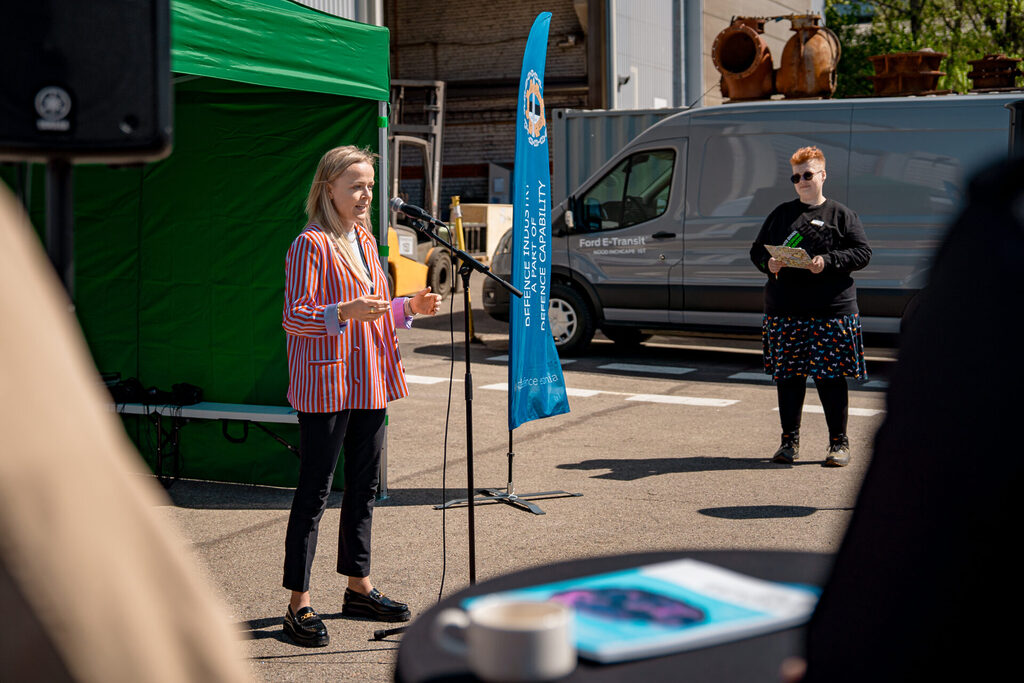
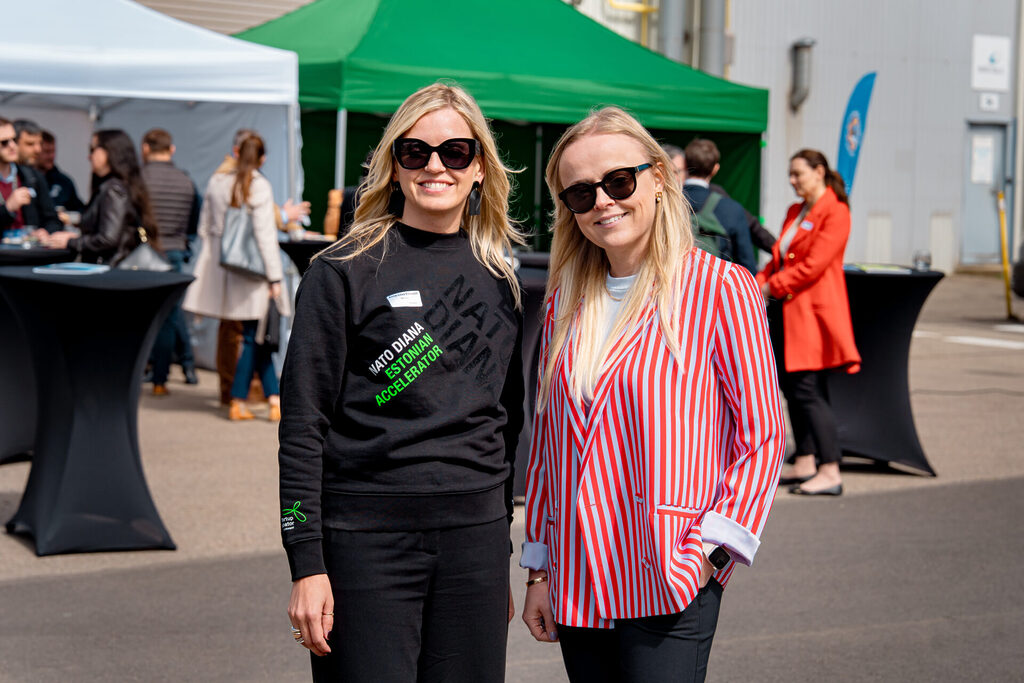
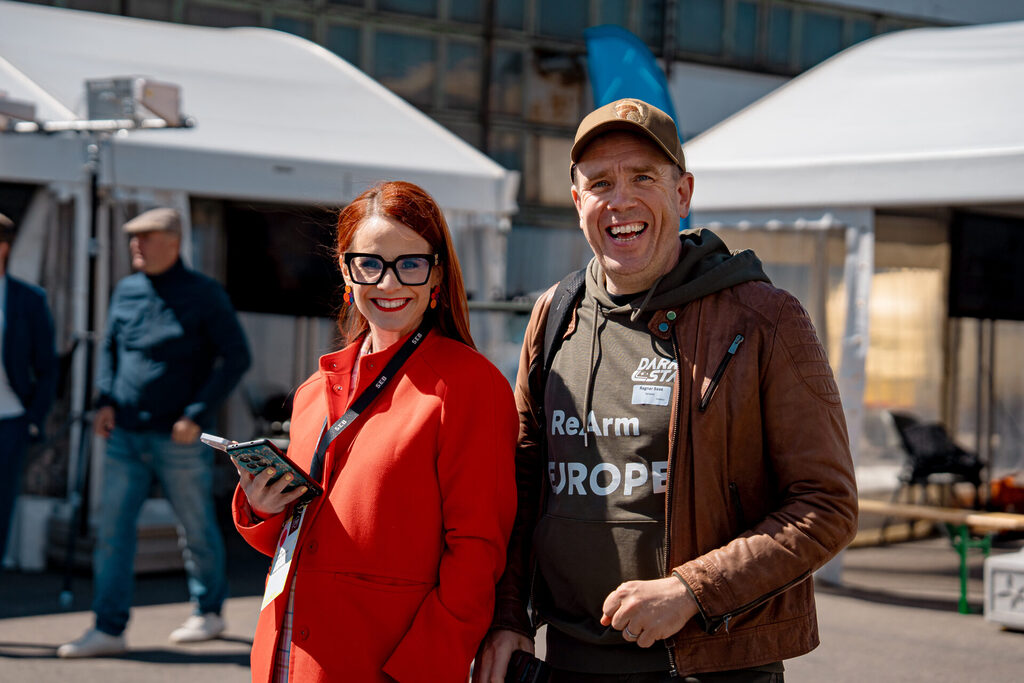
Interest in the programme has grown significantly since its pilot year, which attracted around 1,300 applicants. In 2025, more than 2,600 companies applied, with only 74 selected to join. Despite the fierce competition, two Estonian companies—Telearmy and Wayren—secured a place. Wayren, a deep tech startup founded by former cyber defence officers, recently signed a €7.9 million strategic investment agreement with EFA GROUP, one of the world’s leading defence industry corporations.
Henry Härm, Co-founder and CEO of Wayren, highlighted the critical role of networking in their success within the DIANA programme: “The DIANA accelerator has provided us with access to world-class networks, training, and testing opportunities through Tehnopol and Sparkup Tartu Science Park. The programme has been instrumental in developing our product and scaling the company, which ultimately led to a €7.9 million strategic investment agreement. Events like the Demo Day give DIANA companies the chance to build valuable connections with end-users and investors. We strongly encourage other dual-use startups to apply and take advantage of the opportunity to work with leading innovators, experts, and stakeholders.”
Wayren’s communication platform enables secure, resilient communications between soldiers, command centres, and platforms even under complex battlefield conditions.
Sigrid Rajalo, Head of the Innovation and Technology Department at the Ministry of Economic Affairs and Communications, and Estonia’s representative on the NATO DIANA Board of Directors, noted that DIANA is soon to reach full operational capability ahead of NATO’s summer summit. “The NATO DIANA cross-alliance accelerator has already become an undisputed leader in defence innovation. Estonia has been a strong supporter of this initiative from the very beginning, which is why it was a great honour to host the official meeting of the DIANA Board of Directors in Tallinn yesterday, where the final key decisions were made ahead of the NATO summit.”
The next NATO DIANA application round and a new set of dual-use challenges will be announced in June, with introductory webinars for interested applicants taking place at the end of May. All dual-use deep tech companies registered in a NATO member state are eligible to apply.
The defence technology demo day was organised in collaboration with Defence Estonia and Invest Estonia. It was an official side event of Latitude59. The NATO DIANA Estonia Accelerator is run by Tehnopol Startup Incubator in cooperation with Sparkup Tartu Science Park. The programme is funded in Estonia by the Ministry of Economic Affairs and Communications and supported by the Ministry of Foreign Affairs, the Ministry of Defence, and the City of Tallinn. Contributors to the alliance-wide network of test centres in Estonia include TalTech, the University of Tartu, CR14, the Estonian Military Academy, the Estonian Academy of Security Sciences, the Estonian Aviation Academy, and Metrosert.
See the full photo gallery here!
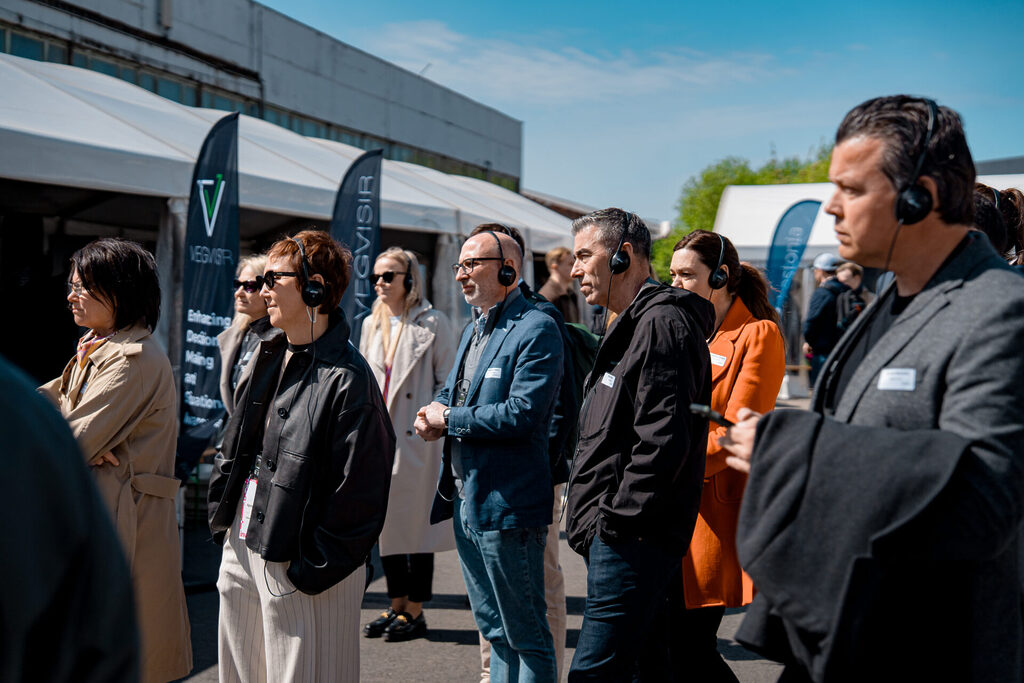
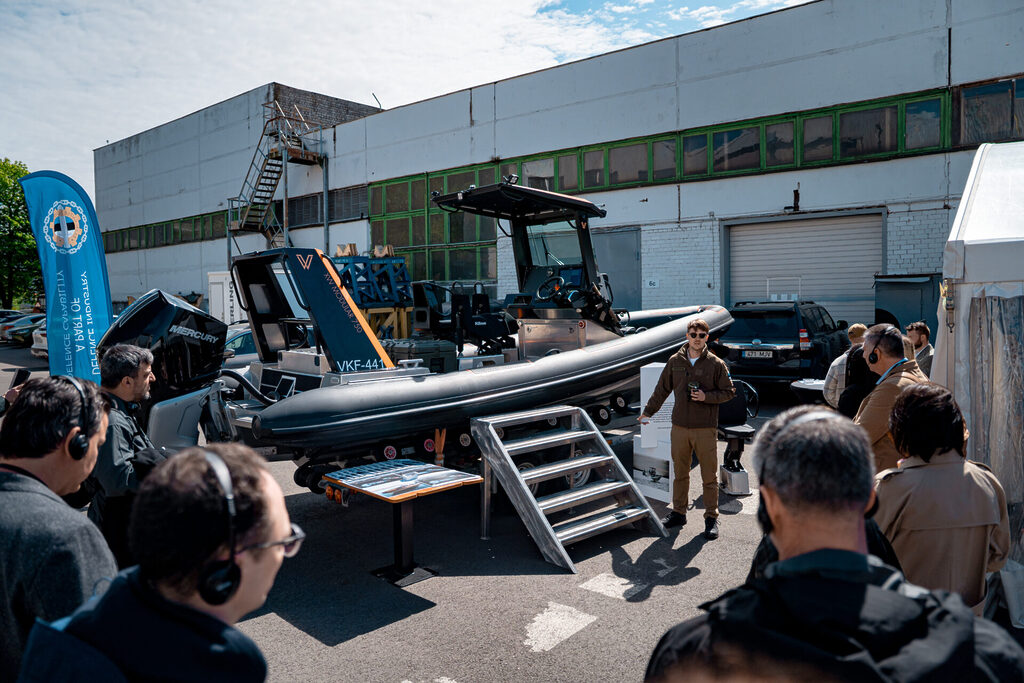
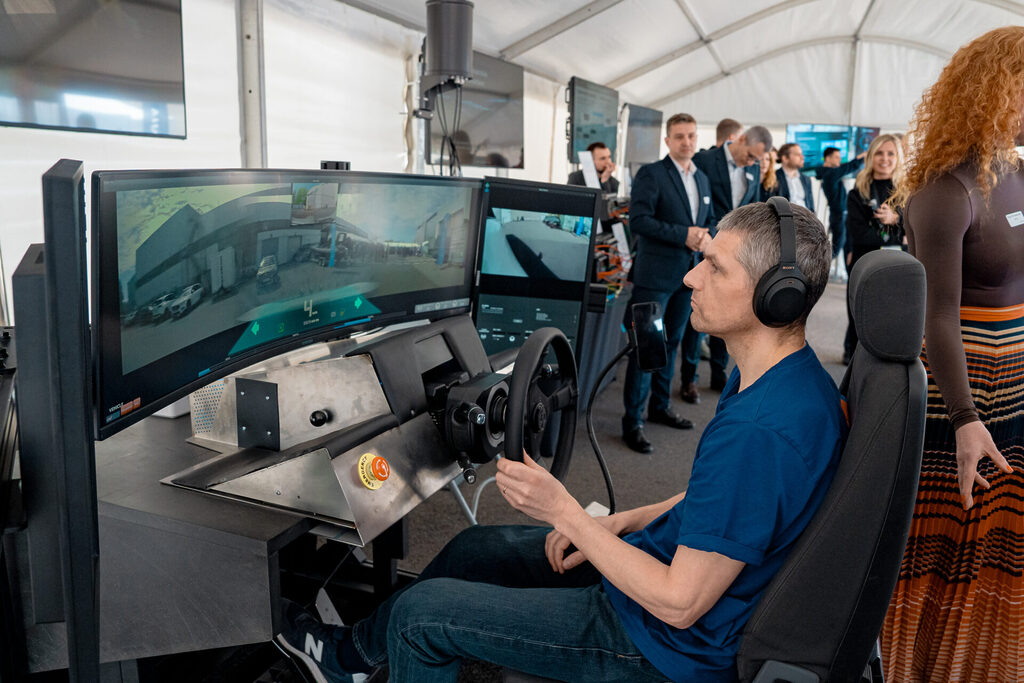
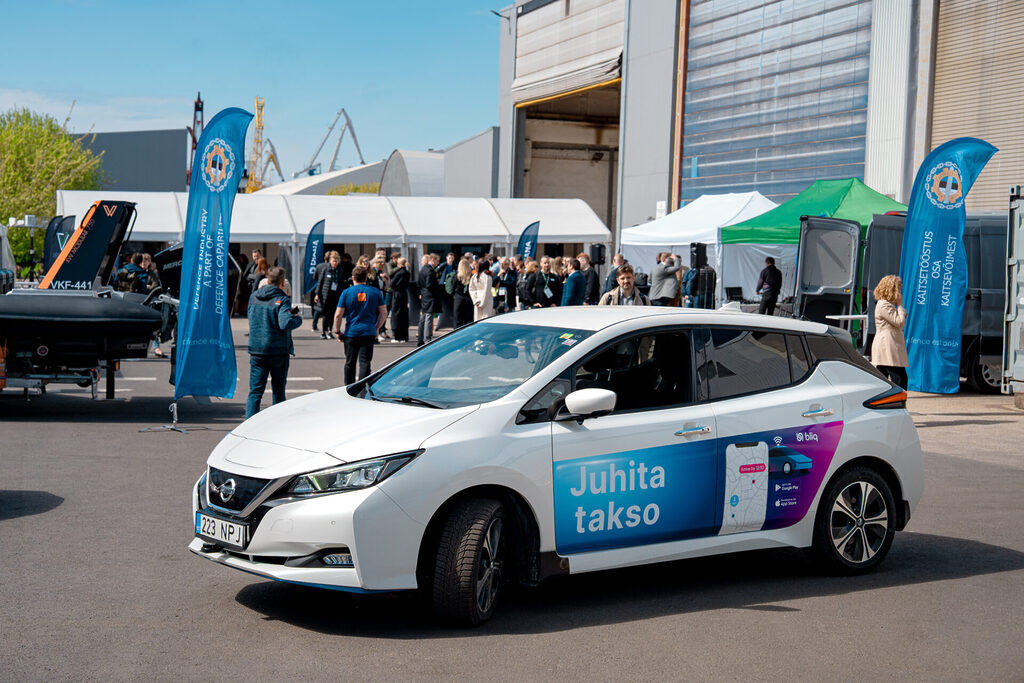
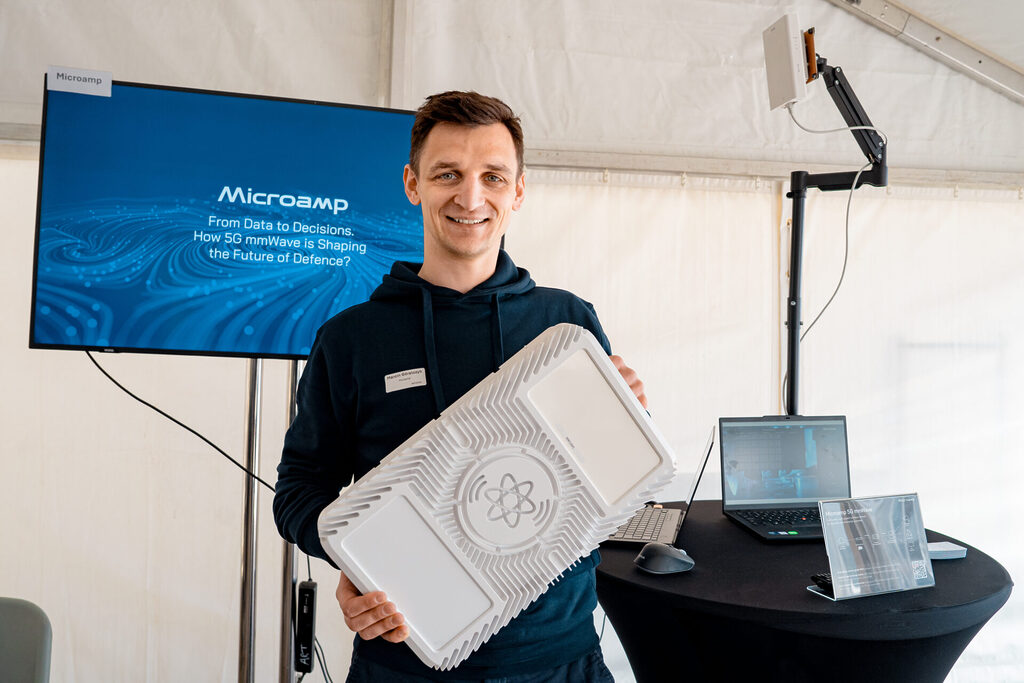
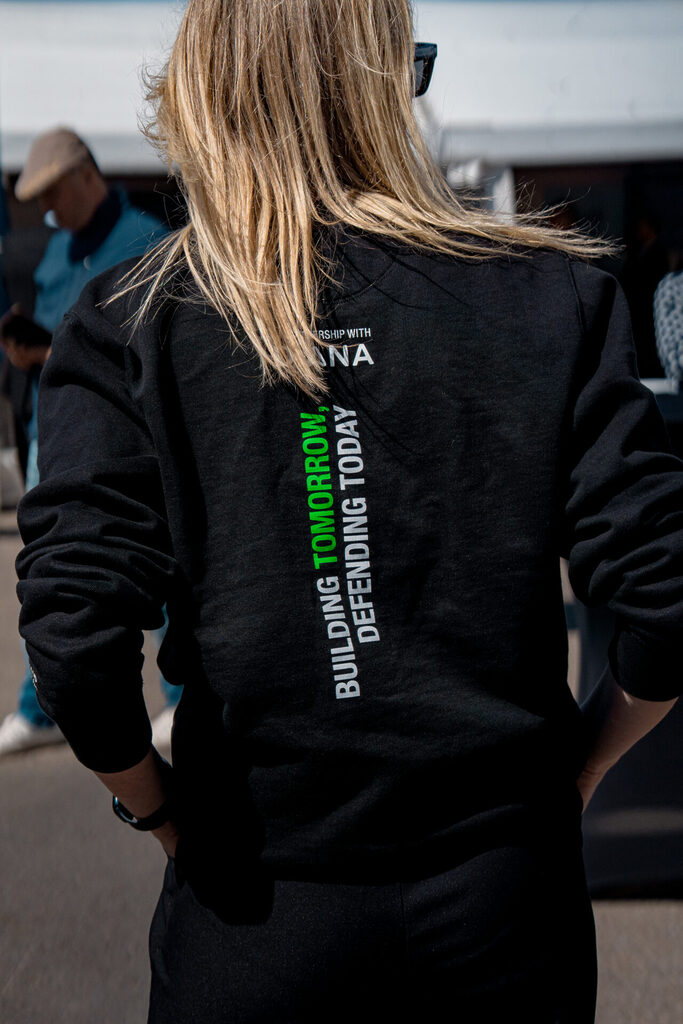
Startup Story: Wayren X NATO DIANA Estonian Accelerator
Wayren is developing a platform for uninterrupted communication in critical environments, enhancing situational awareness and operational efficiency — from battlefields to remote industries. Founders Henry Härm, Tarmo Aia, and Oliver Tiit have extensive experience in building Command and Control (C2) systems* within the Estonian Cyber Command. Recently, the company signed a €7.9 million strategic investment agreement with EFA GROUP. Let’s explore their NATO DIANA journey so far.
How was the startup idea born?
While building and deploying the Estonian Command and Control system, we discovered a technological gap in digitalising last-mile communications. Industry-standard protocols tend to fail in harsh battlefield conditions. We founded Wayren to solve this problem by developing a data synchronisation protocol that works even when underlying networks are unreliable, and packaging it into a communication platform for tactical system use.
What has been your biggest win and biggest challenge so far?
Our biggest win has been delivering a pilot project with the Defence League, which provided valuable insights for product development and led to collaborations with excellent industry partners like Scytalys. The biggest challenge has been managing the complexities of evolving from a minimum viable product (MVP) to a scalable solution.

What differentiates your company from the competition?
Our solution stands out because it is software-based and deployed directly on the end-user device alongside the C2 system. It integrates various communication equipment and ensures efficient peer-to-peer data synchronisation on the battlefield using all available connectivity methods.
Why did you apply to the NATO DIANA accelerator?
We joined the DIANA programme to take advantage of testing opportunities that help us further validate our technology, and to connect with end-users, like-minded founders, and mentors.
Where do you see your company in 12 months’ time? How about in 5 years?
In 12 months, we aim to have a scalable product in active use by our initial defence customers. In 5 years, we envision Wayren as a recognised player in the defence industry, delivering communication and future soldier solutions, and expanding into other mission-critical sectors.
What is your number one piece of advice to fellow startup founders?
Spend as much time as possible meeting and understanding your clients — it’s invaluable.
The Estonian accelerator is implemented by Tehnopol Startup Incubator in cooperation with Sparkup Tartu Science Park.
*C2 system: A Command and Control system used to manage and coordinate military operations in real time.




